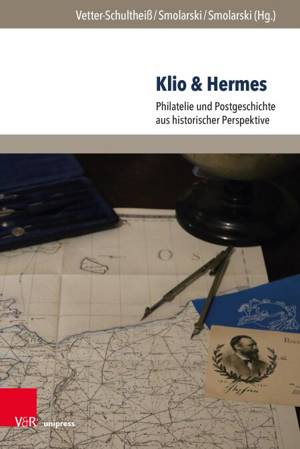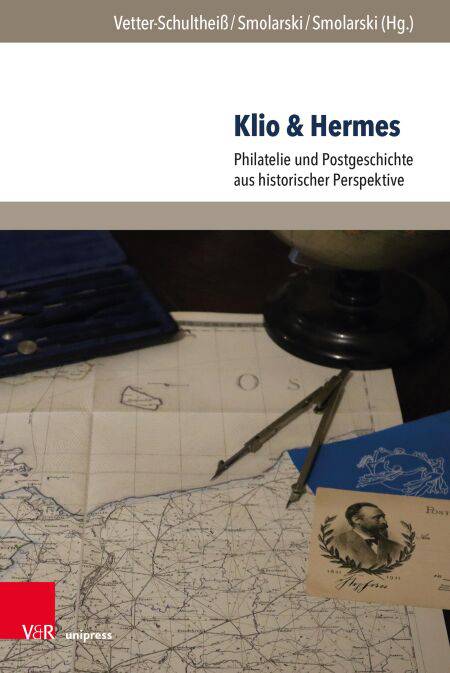
- Afhalen na 1 uur in een winkel met voorraad
- Gratis thuislevering in België vanaf € 30
- Ruim aanbod met 7 miljoen producten
- Afhalen na 1 uur in een winkel met voorraad
- Gratis thuislevering in België vanaf € 30
- Ruim aanbod met 7 miljoen producten
Zoeken
Klio & Hermes E-BOOK
Philatelie und Postgeschichte aus historischer Perspektive
€ 55,00
+ 55 punten
Uitvoering
Omschrijving
Im 19. Jahrhundert gab es Veränderungen im Postwesen: Aufbau einer neuen Verkehrsinfrastruktur; Entstehung von Nationalstaaten und anders zugeschnittene Zuständigkeitsbereiche im Postwesen sowie die Gründung des Weltpostvereins; Erfindung der Briefmarke und damit eines visuellen Kommunikationsmittels in Miniaturformat. Doch auch das 20. Jahrhundert bot Umwälzungen für das Postwesen: Erster und Zweiter Weltkrieg sowie zerfallende Kolonialreiche hatten eine neue Weltordnung zur Folge, die sich sowohl in sich verändernden Postverwaltungen als auch auf den Motiven von Postwertzeichen festmachen lassen. Ende des 20. Jahrhunderts fand in vielen Ländern eine Privatisierung des Postwesens statt, was die Funktion von Postwertzeichen als Ausdruck staatlicher Symbolik in Frage stellte. Die Beiträge zeigen, wie verwoben Verkehrsinfrastruktur, Postwesen, staatliche Organisation und Briefmarkenmotive sind und sich gegenseitig bedingen.
The book shows how productive historical, social and economic research questions to philatelic and postal history sources can be and makes civic knowledge accessible for university research as well. The 19th century saw changes in the postal system: The development of a transport infrastructure with the help of railroads; the emergence of nation states and newly tailored areas of responsibility in the postal system, as well as the founding of the Universal Postal Union; the invention of the postage stamp and thus a visual means of communication in miniature. But the 20th century also offered upheavals for the postal system: World War I and World War II as well as disintegrating colonial empires resulted in a new world order, which can be seen both in changing postal administrations and on the motifs of postage stamps. At the end of the 20th century, privatization of the postal system took place in many countries, calling into question the function of postal stamps as an expression of state symbolism. The contributions show how interwoven transport infrastructure, postal system, state organization, and stamp motifs are and how they are mutually dependent on each other.
The book shows how productive historical, social and economic research questions to philatelic and postal history sources can be and makes civic knowledge accessible for university research as well. The 19th century saw changes in the postal system: The development of a transport infrastructure with the help of railroads; the emergence of nation states and newly tailored areas of responsibility in the postal system, as well as the founding of the Universal Postal Union; the invention of the postage stamp and thus a visual means of communication in miniature. But the 20th century also offered upheavals for the postal system: World War I and World War II as well as disintegrating colonial empires resulted in a new world order, which can be seen both in changing postal administrations and on the motifs of postage stamps. At the end of the 20th century, privatization of the postal system took place in many countries, calling into question the function of postal stamps as an expression of state symbolism. The contributions show how interwoven transport infrastructure, postal system, state organization, and stamp motifs are and how they are mutually dependent on each other.
Specificaties
Betrokkenen
- Uitgeverij:
Inhoud
- Aantal bladzijden:
- 266
- Taal:
- Duits
- Reeks:
Eigenschappen
- Productcode (EAN):
- 9783847015734
- Verschijningsdatum:
- 16/04/2023
- Uitvoering:
- E-book
- Formaat:

Alleen bij Standaard Boekhandel
+ 55 punten op je klantenkaart van Standaard Boekhandel
Beoordelingen
We publiceren alleen reviews die voldoen aan de voorwaarden voor reviews. Bekijk onze voorwaarden voor reviews.










